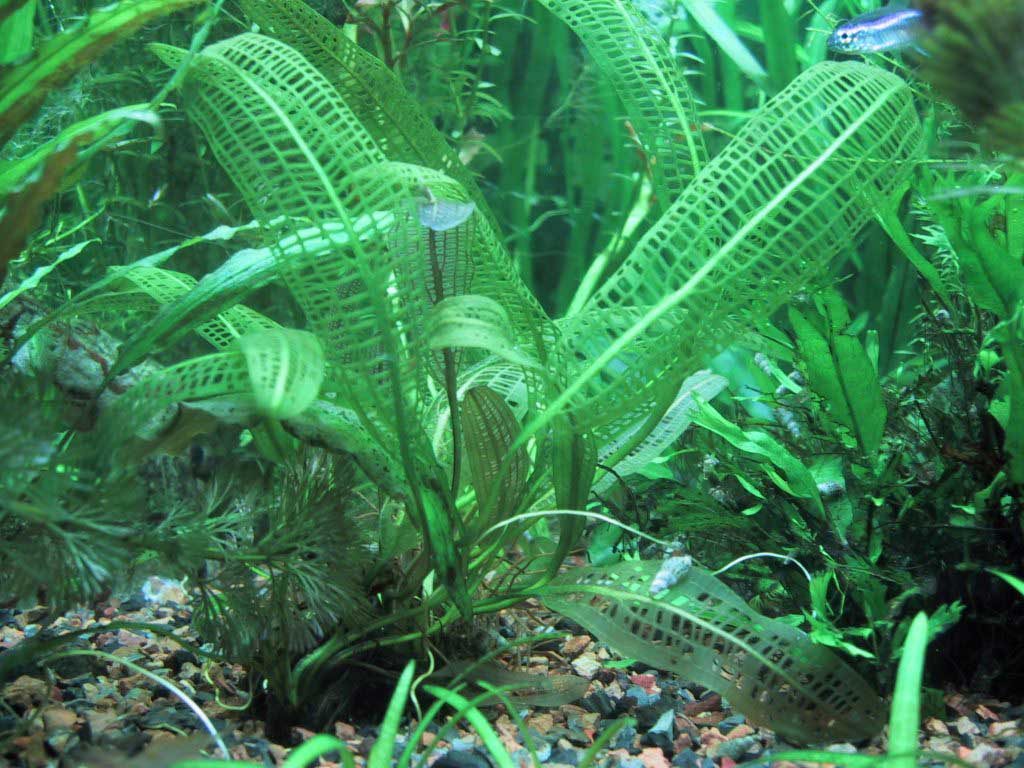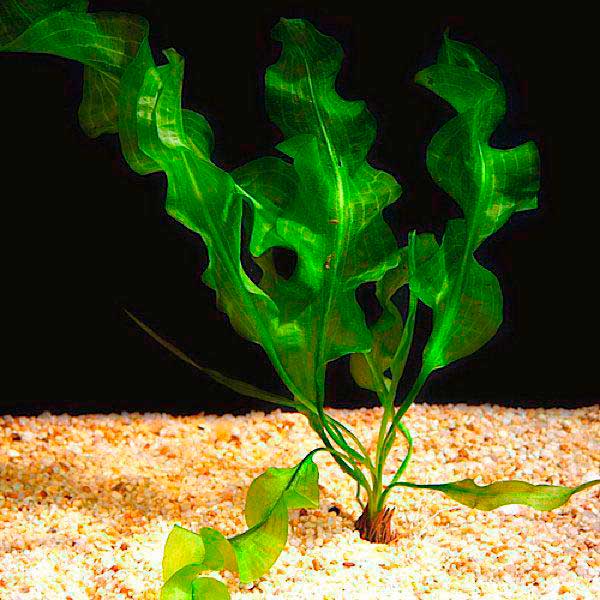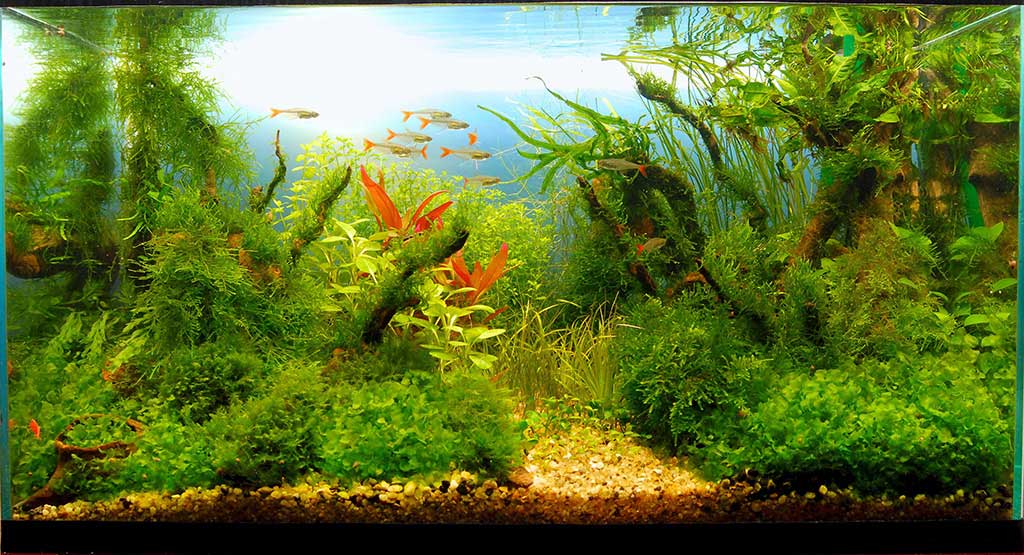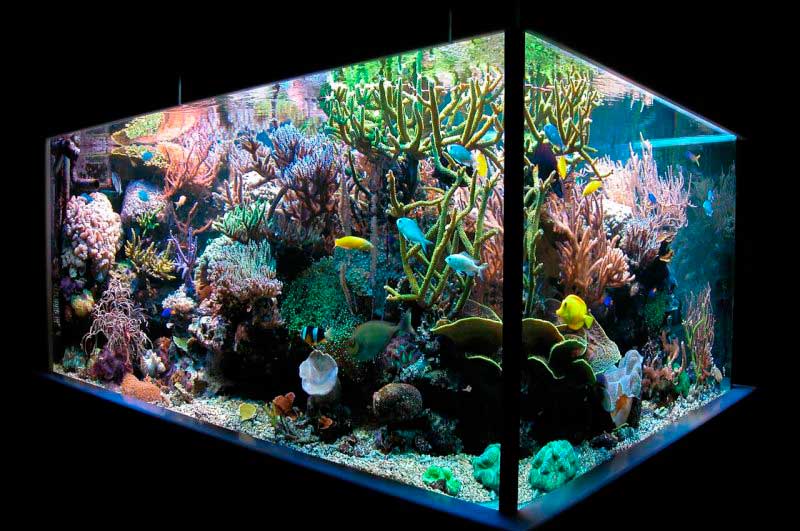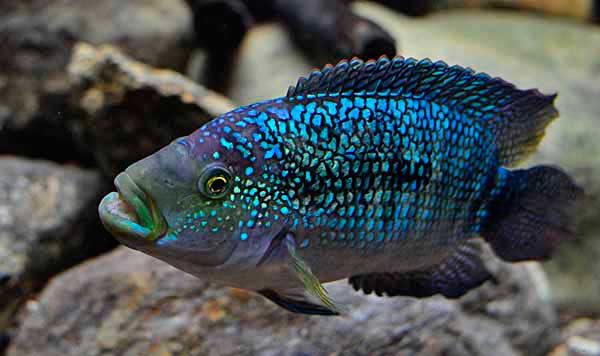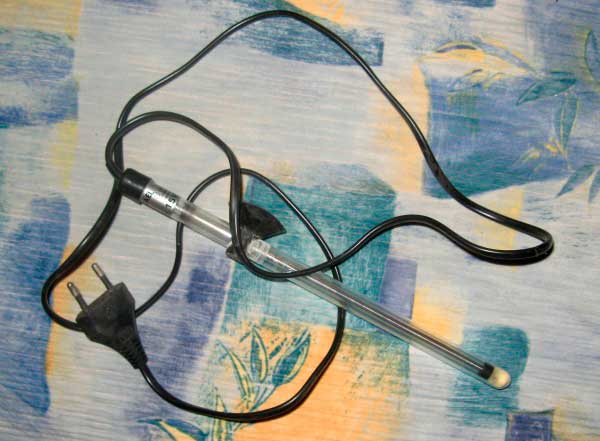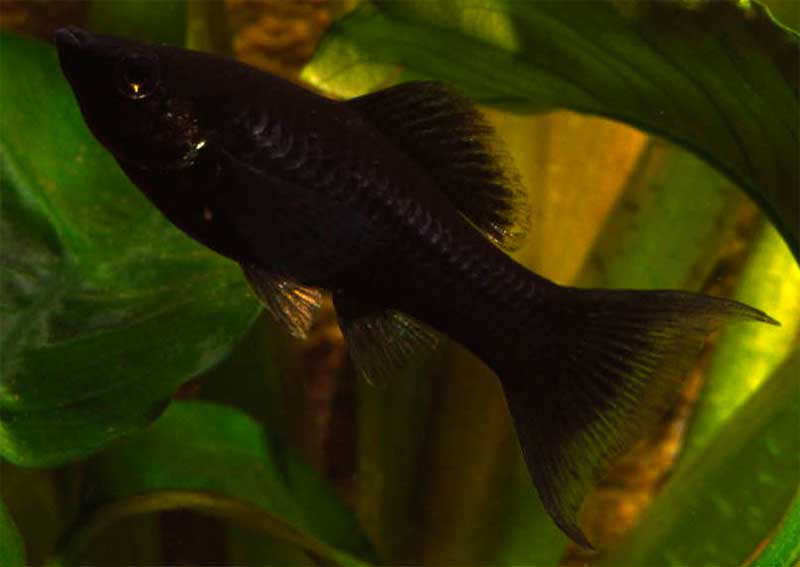Aponogeton madagascar is known to most aquarists who are fond of plants or at least once looked through the catalog of aquarium plants. There are very few books on aquarium plants that do not mention this amazing plant.
However, behind the glass of our aquariums it is very rare. This is due to the relative complexity of maintenance. However, its reproduction also has its own peculiarities, without knowing which it is impossible to get seeds of this plant. Because of the above, this plant is more suitable for the Dutch aquarium or for separate maintenance in an aquarium equipped specifically for it.
It is clear that not every amateur can afford such a thing. You need to be a bit of a fan of this plant to keep in a fifty-liter aquarium only him. However, it is worth it.
- kingdom: Plants
- Division: Covered seeds
- Class: Annuals
- Order.: Passionflowers
- Family: Aponogeton
- Rod: Aponogeton
- View: Aponogeton madagascar.
Synonyms: Uvirandra, lace plant, aperture plant.
Uvirandra was described by H. Bruggen in 1806.
Aponogeton madagascar Habitat
This plant lives in the streams and rivers of Madagascar. It has a root system represented by a tuber or tuber-like rhizome. The most amazing thing about this plant is its leaves. Their leaf lamina has many through holes, which gives it the appearance of green, woven by nature itself lace.
The shape and pierced leaves have given this plant such names as lace plant, net plant, pierced plant. This plant is called Aponogeton madagascar by its place of growth. The Latin name is Aponogeton Madagascariensis.
Virendra is propagated by seeds, which are produced on a peduncle rising above the water. The inflorescence is a bifurcated spike with small spirally arranged flowers.

If you are still lucky enough to get this plant, you should keep in mind that for it alone you need about fifty liters of water. However, it needs this volume if you want to get seeds from it. For simple maintenance or just to save until future blooms, you can keep it with other hydrobionts that suit the conditions of the content of the uvirandra. The content of aponogeton Madagascar has some peculiarities.
Aponogeton madagascar Water parameters
The water temperature is 22 – 24 degrees Celsius. The active reaction of the water is 6.5 -7.2. Water should be soft. It is desirable to set its hardness within 6-8 degrees. To obtain such hardness, fresh, boiled and distilled water should be mixed in approximately equal volumes.
Lighting
Nothing special so far, except for the soft water. And now about peculiarities. The main feature is due to the small area of the light-absorbing surface of the leaf because of its perforation. Therefore, to meet its energy needs Aponogeton Madagascar must receive a large amount of light. For this purpose, ordinary daylight lamps are not suitable. They give a spectrum that is not perceived by the uvirandra. When using daylight lamps, the leaves of the uvirandra curl up or lie on the bottom. No flowering is possible with this kind of light.
The literature indicates the successful use of krypton lamps for illumination of the lace plant. Krypton lamps have a high light output and a possibly more suitable emission spectrum. The krypton lamps should have a total wattage of about 100 watts. Considering their temperature, they should be placed at some distance from the water surface. In addition, it is better to dial in this total wattage with several lamps of lower wattage. For example, four lamps of 25 watts each.
How do you create a water current?
The second feature of maintenance is the need for a water current. This is nowadays relatively easy to achieve. Suffice it to install in the aquarium pump, which are now produced by many companies producing equipment for aquarists.
When the plant feels that the environmental conditions are good enough to reproduce, it will bloom. It will have a split spike on a long peduncle with small flowers.

Aquarist – bee 🙂
The flower is beautiful on its own. But it will not self-pollinate without your participation. The fact is that the pollen of this plant ripens earlier than the stigmas of the pistils. Therefore, if you want to get seeds, then you will have to take on the role of a bee. To do this, you need to carefully collect pollen on a tightly wound absorbent cotton on a match. Put it in a secluded place, or better stick, for example, in a piece of plasticine, so that the pollen does not touch anything. About a day later it can be applied to the ripened stigmas of pistils.
Note that self-pollination is often not very successful. Seeds obtained by self-pollination may produce weak plants. Therefore, it is still advisable to have two plants and cross-pollinate them to obtain full seeds. Even in this case, the role of the pollinator is yours.
If the pollination was successful, the peduncle will lower the inflorescence under water. The fruits of the multileaf will be formed. They ripen in about twenty days, after which they float to the surface, and the seeds contained in them fall to the bottom. The seeds resemble a grain of rice in size and shape, except that their color is not white, but green. Seeds are oriented in the upper-lower direction with the help of special scales. They take root in the soil with the help of thin, strongly pubescent roots. After the appearance of two true leaves, a tuber – rhizome – begins to develop.
Conclusion
As you can see amazing features, habits, form and physiology in the aquarium can have not only fish and animals, but also plants. Confirmation of this is aponogeton Madagascar – a plant is quite difficult to maintain and reproduce. But it can bring its owner, who managed to create the right conditions for it, a lot of pleasant moments.
